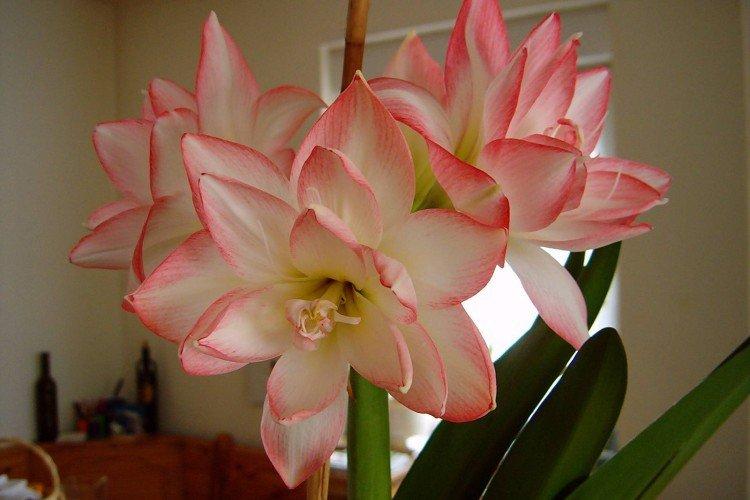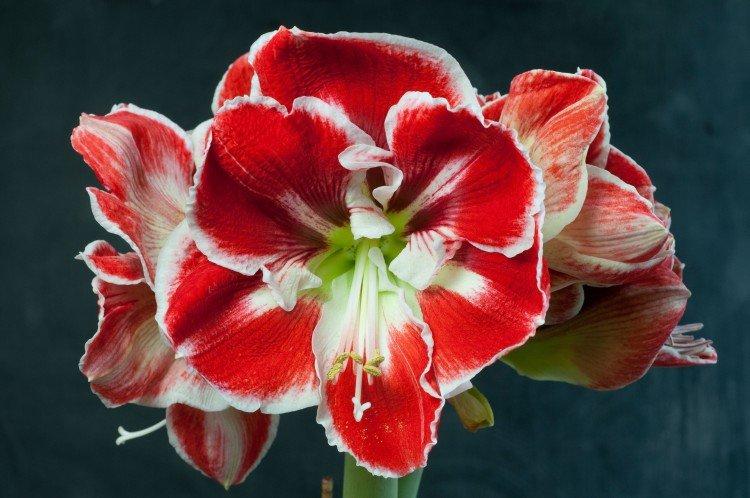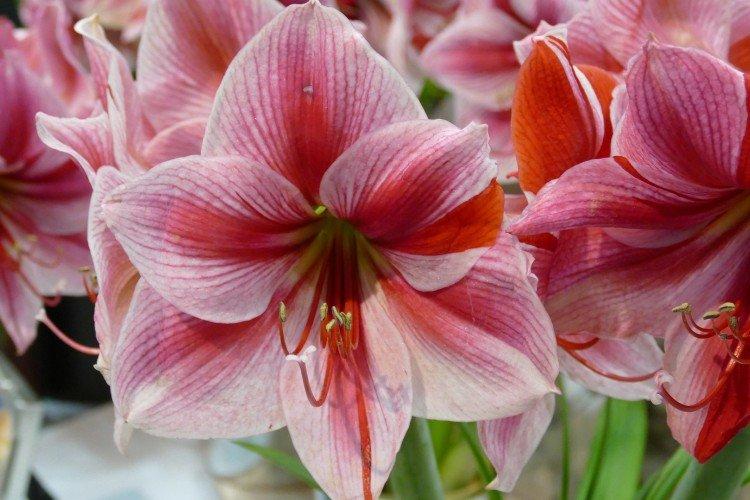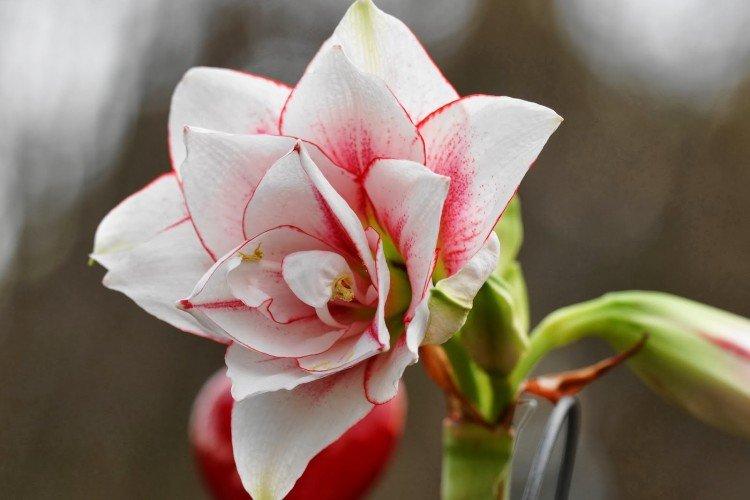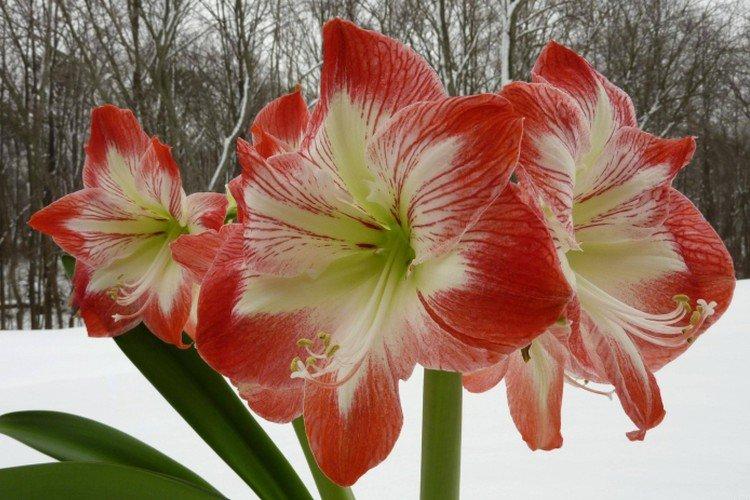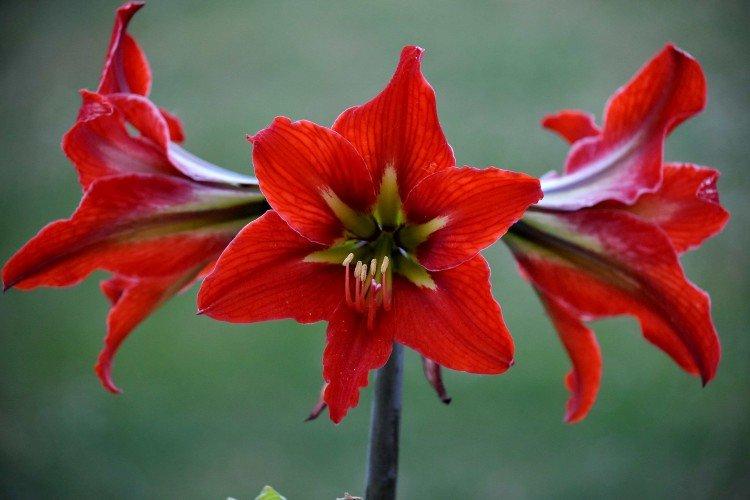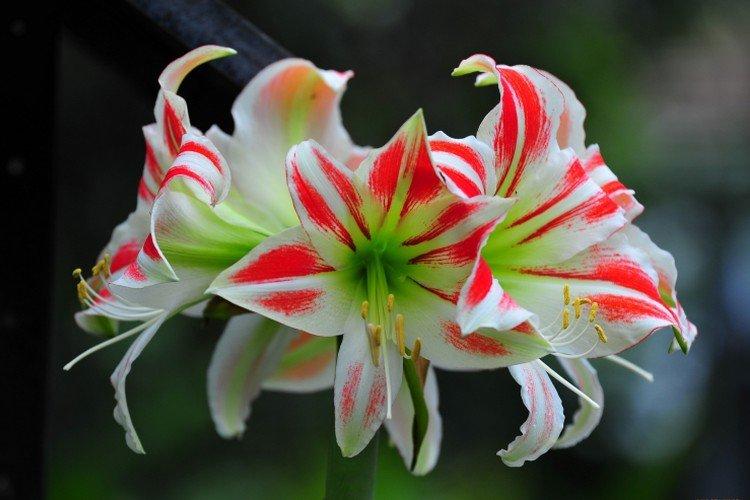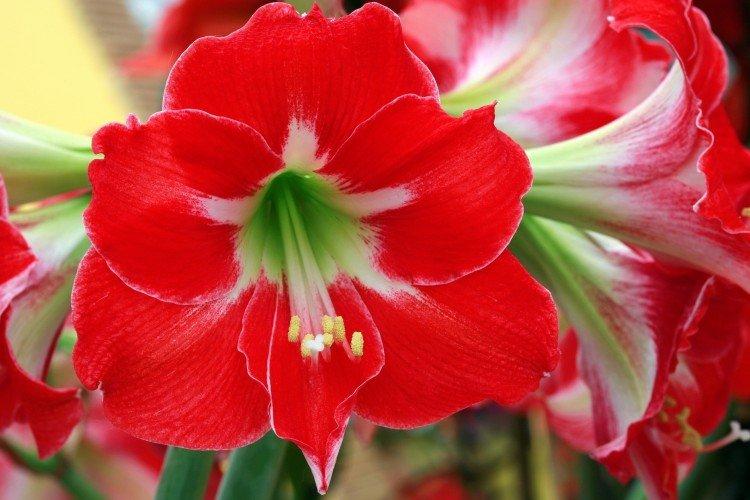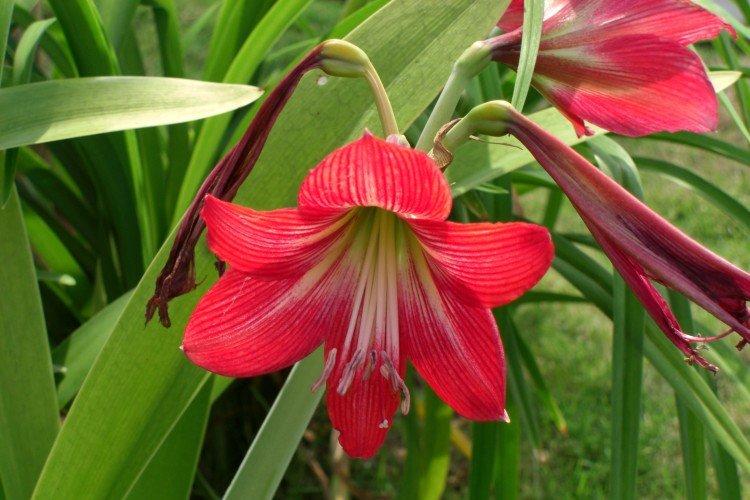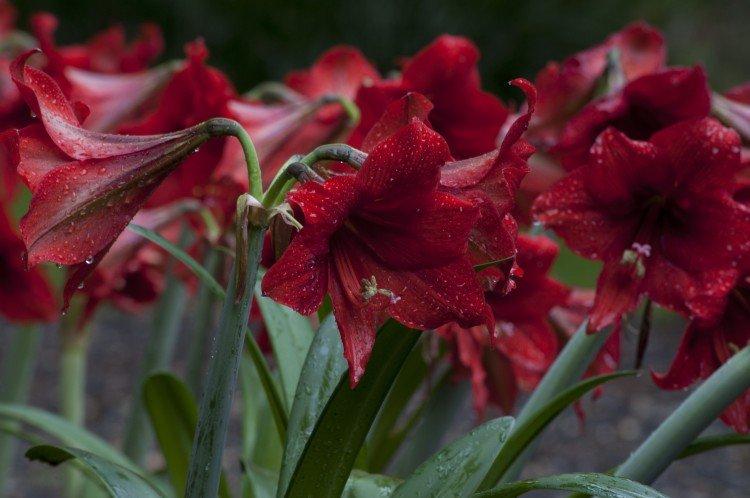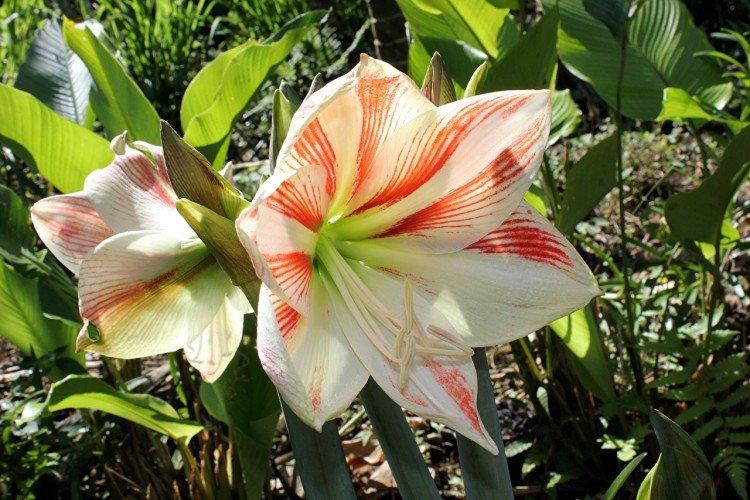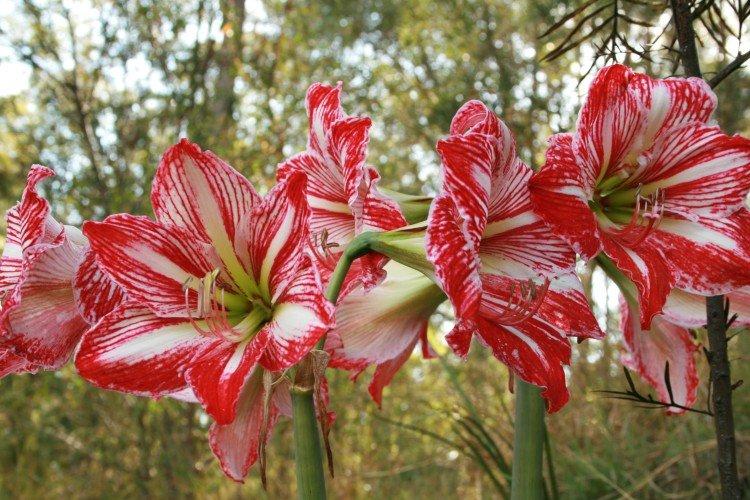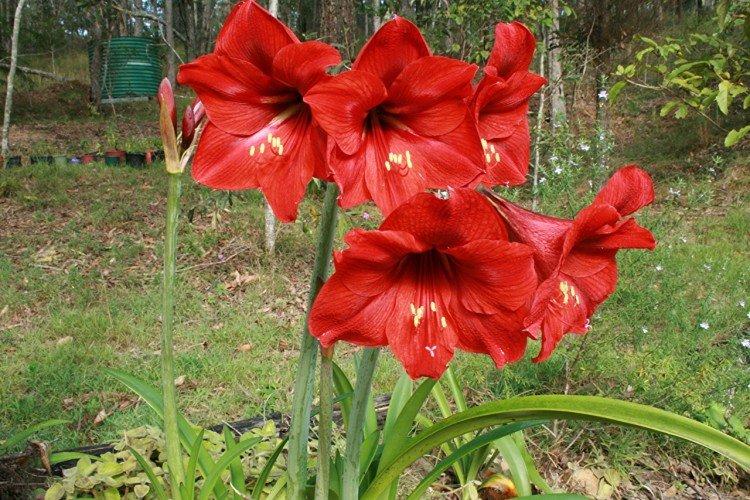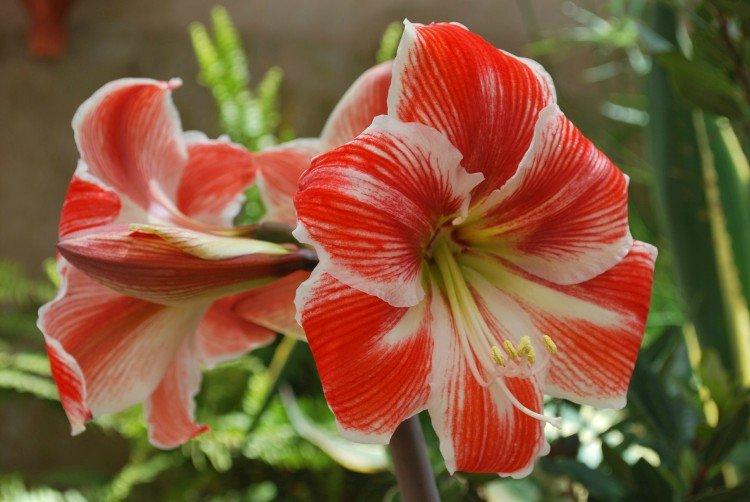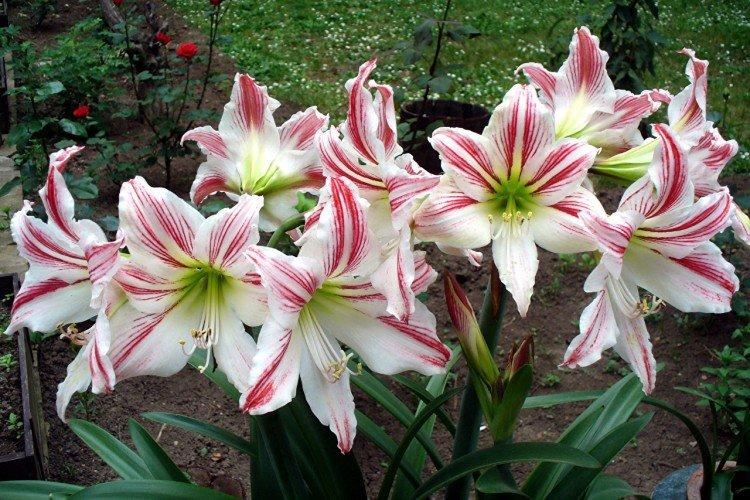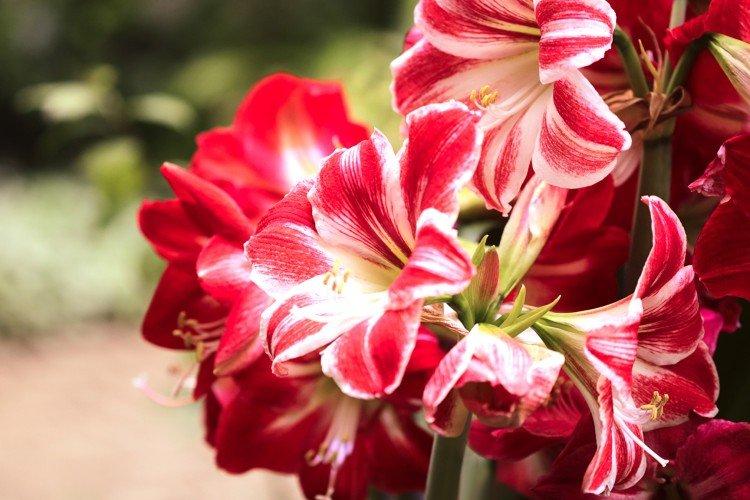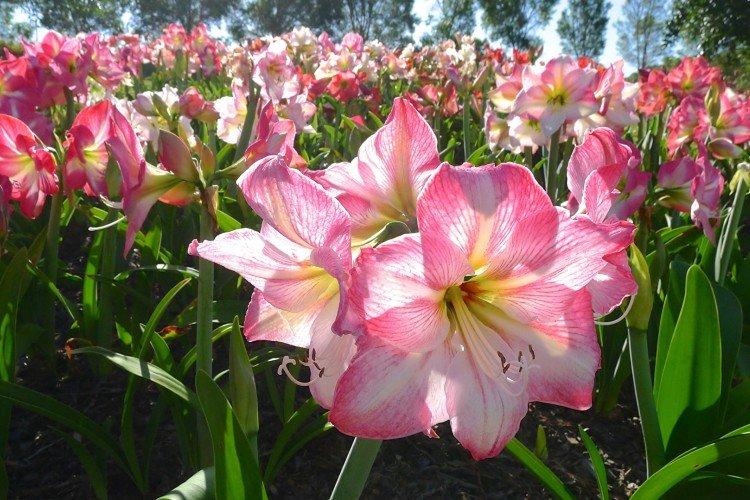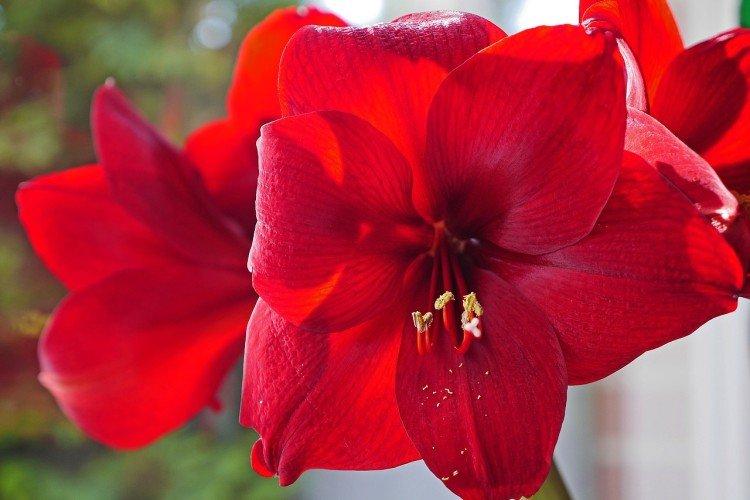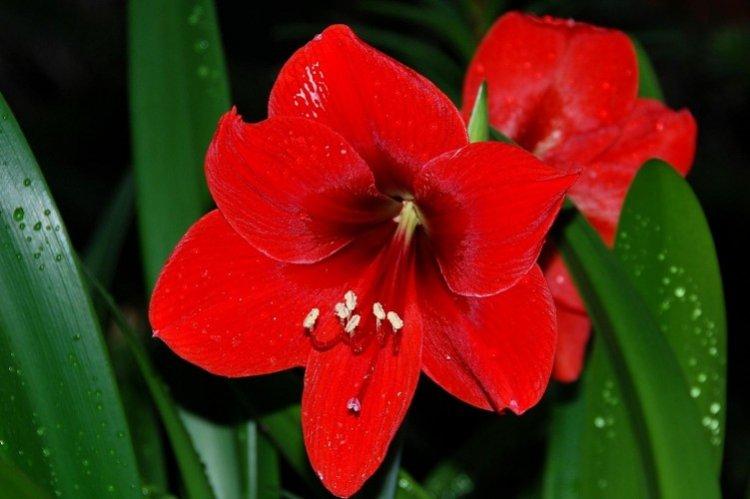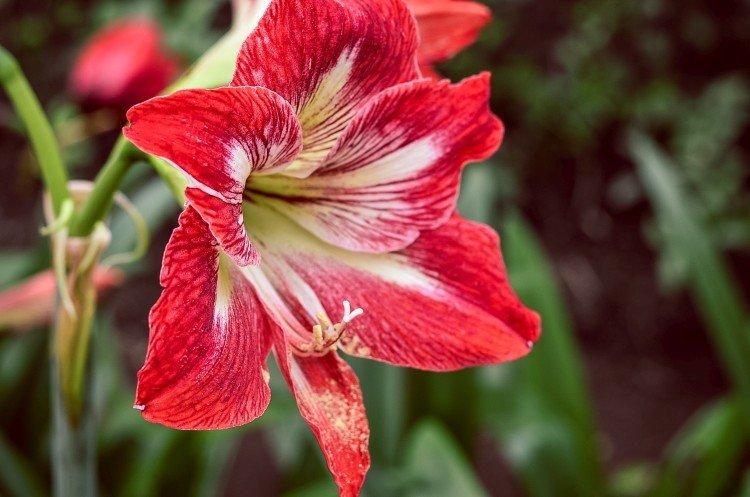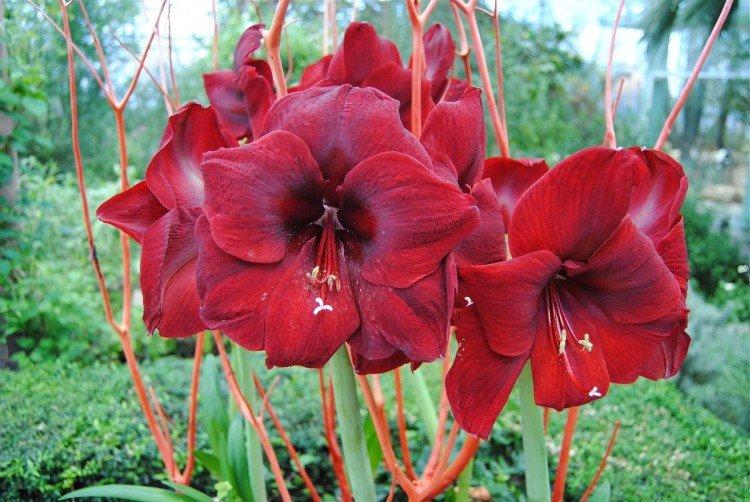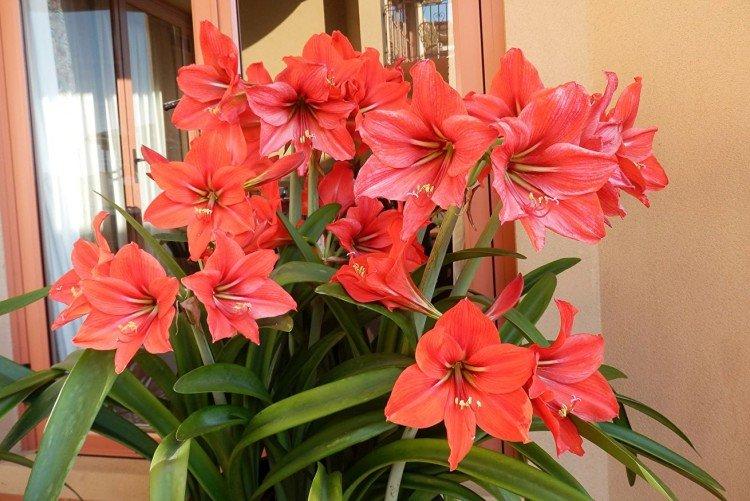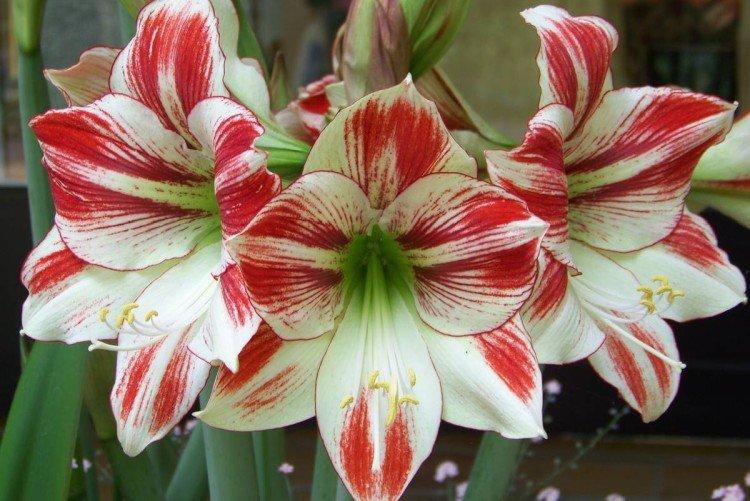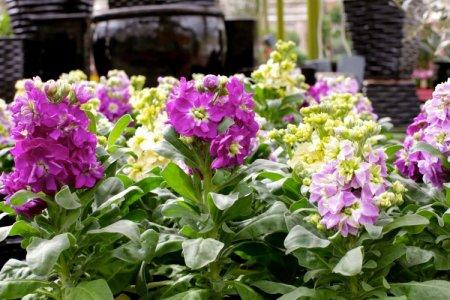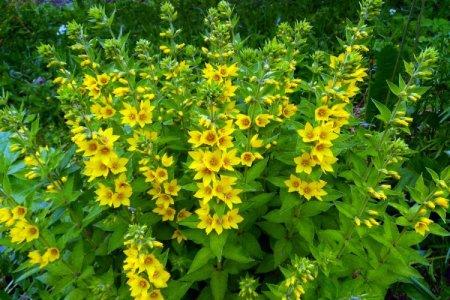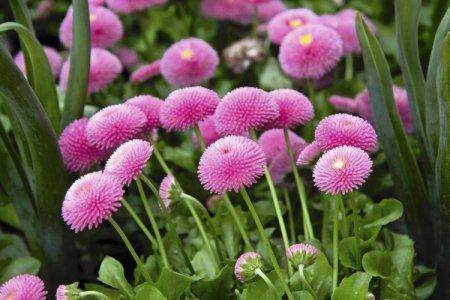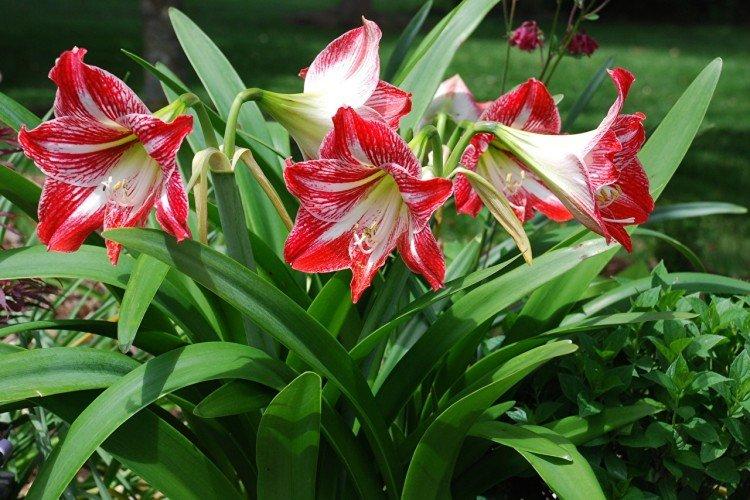
Amaryllis flowers resemble lilies, and this is what makes it interesting. And also the variety and originality of the colors of the buds. Amaryllis in the garden is quite capricious, but at the same time, rare plants can rival him in beauty and ability to attract attention!
general information
Amaryllis is a tall and fairly tall bulbous plant from the family of the same name. Its juice is toxic, and it was once even used to lubricate the tips of poisoned arrows. At the same time, it is in demand in medicine.
Long linear leaves grow up to 50 cm and form a dense basal rosette. The amaryllis needs a dormant period in winter, so the bulb is allowed to rest. Amaryllis begin to bloom by autumn and lasts about 2 months.
The bell-shaped flowers of the amaryllis are very large, in almost any possible shade, with velvety variegated petals. They are collected in large inflorescences that resemble ready-made bouquets. They also give off a strong, sweet scent.
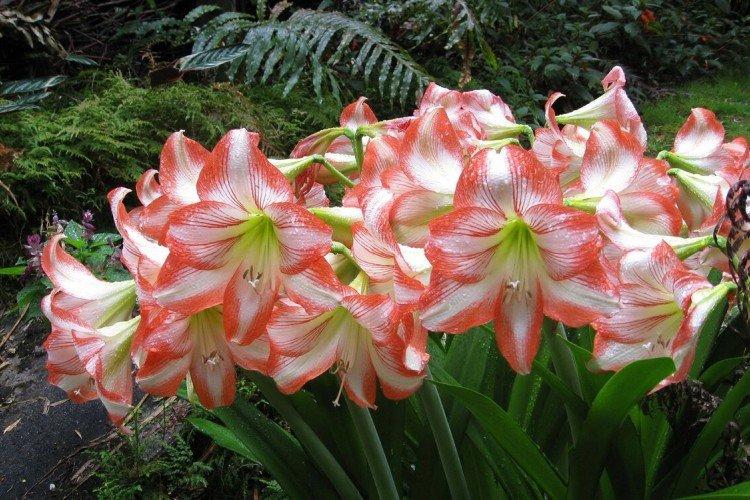
Amaryllis species
Garden amaryllis are classified mainly not by general types, but immediately by varieties. They differ in the shape, size and color of the buds. Here are the most popular ones in our latitudes!
Amaryllis Durban
A spectacular variety with large bell flowers. They are painted in a rich scarlet color with a light whitish spot closer to the middle.
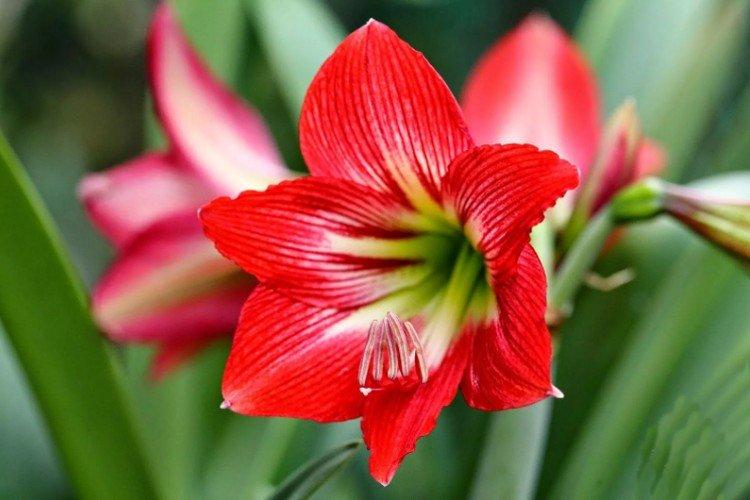
Amaryllis Grandior
The flowers of Grandior are notable for their thin, narrow petals. And also - a heterogeneous variegated color with an unusual color transition from pale to bright.

Amaryllis Paradisicola
This is a broad category with different varieties that combine lush flowers with up to 20 rosebuds each. This is one of the species that is grown exclusively in the garden, while many others are suitable for indoor breeding.
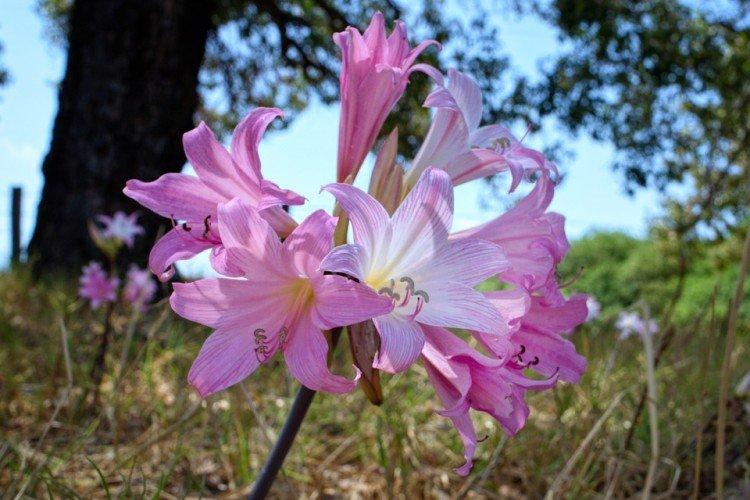
Amaryllis La Paz
One of the most unusual varieties of all existing. And all because such an amaryllis has fancy greenish petals with a scarlet edge.
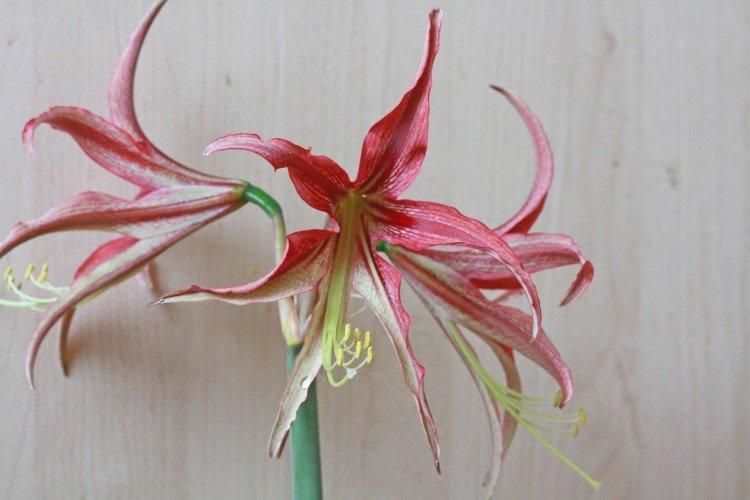
Purple amaryllis
Its beautiful purple buds on long peduncles are simply unmatched. Against the background of a delicate yellow center, the petals seem even brighter.

The Snow Queen
A real find for lovers of white flowers. Although in fact the petals are rather creamy, due to the glossy shine, they seem completely shining.
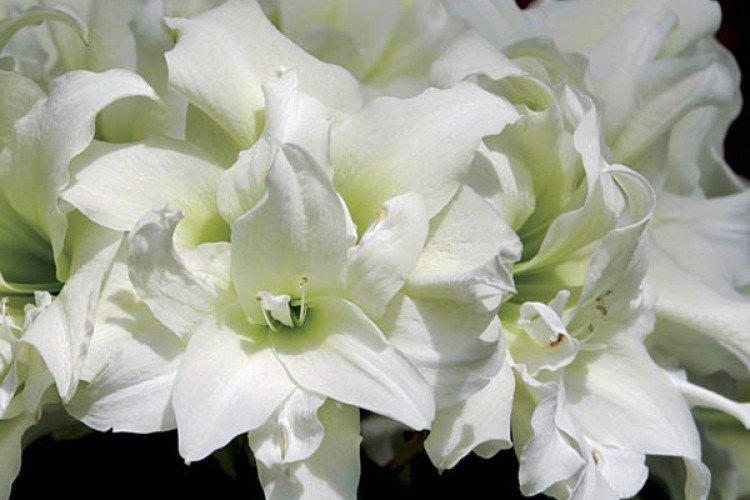
Amaryllis Macarena
Terry amaryllis with white shaded petals. For the beauty of the buds, it is he who is distinguished by many experienced gardeners.
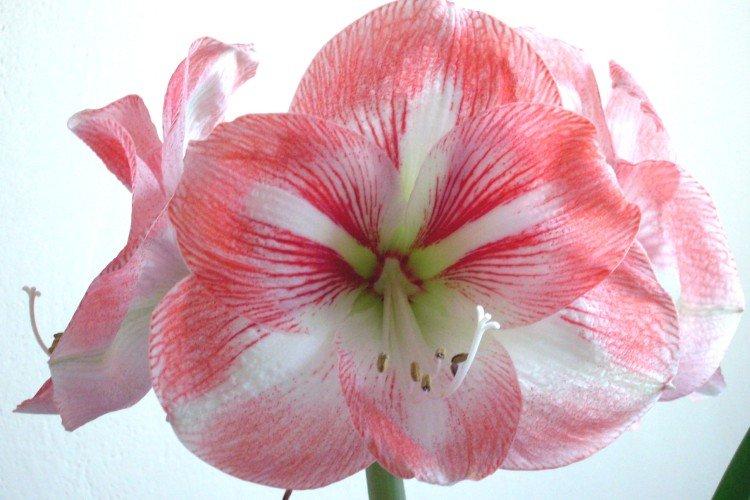
Amaryllis care
Amaryllis are not the most unpretentious plants. It is important to choose the right soil, observe the watering and fertilizing regime, and monitor the temperature. In addition, it is recommended to tie up high grades.
Temperature
Amaryllis is a thermophilic culture. It can hibernate in open ground only in areas where there is no frost as a species. Otherwise, the bulbs must be dug up in the fall and transplanted into pots.
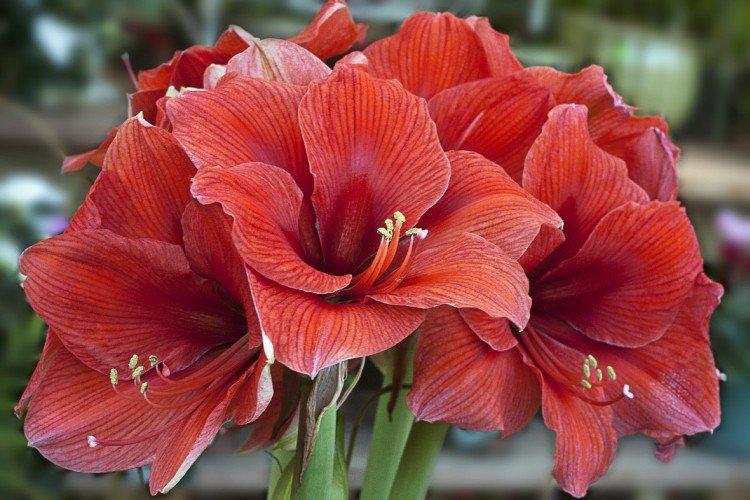
Lighting
Amaryllis categorically does not tolerate shade and will never bloom magnificently in such conditions. He needs as much bright light as possible, so even light shading from trees or buildings will not work.
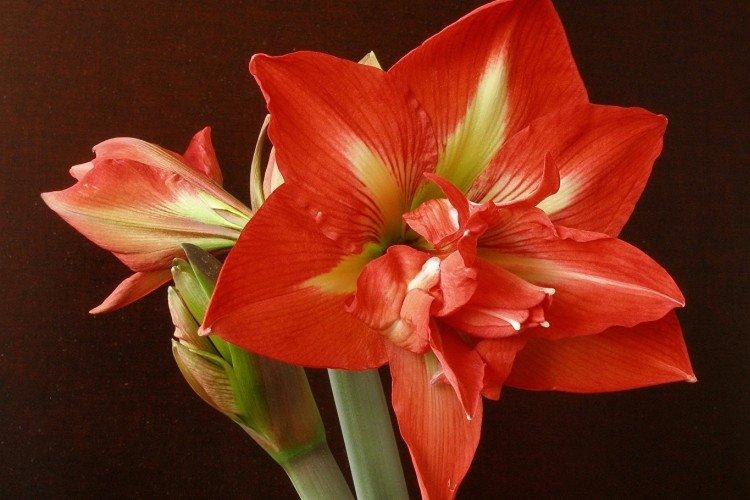
Watering
The frequency and intensity of watering should be increased as the plant grows. Amaryllis does not tolerate drought, but in order not to flood it constantly, mulch the ground around to preserve moisture.
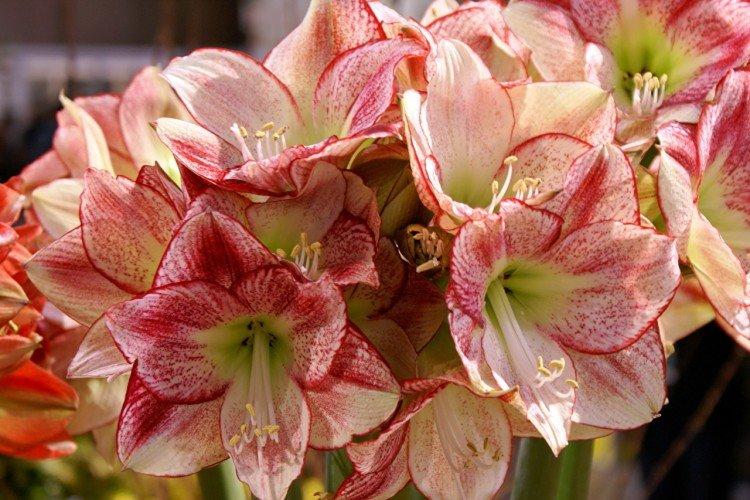
The soil
Amaryllis definitely needs a drained soil - and this is the main condition for its growth. In this case, heavy and clay soils are suitable, and ready-made substrates for bulbous ones are suitable for the house. By the way, some varieties grow well on rocky alpine hills.
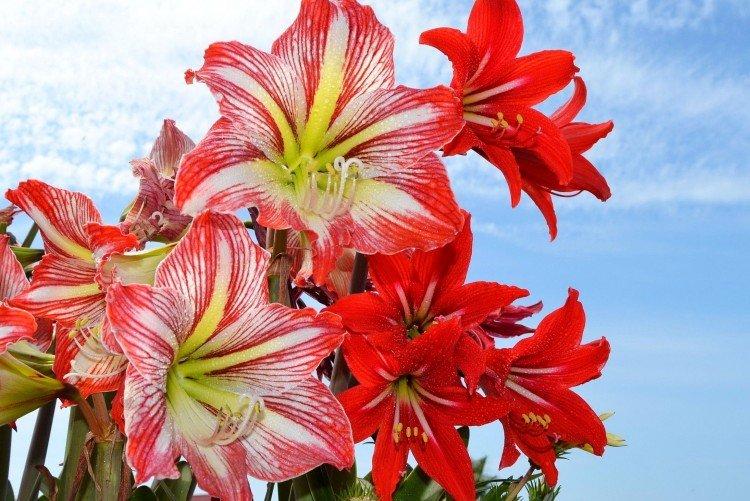
Fertilizers and feeding
Top dressing is needed during the entire period of active growth. Use organic, mineral supplements and complex mixtures. For lush flowering, phosphorus and potassium are required.
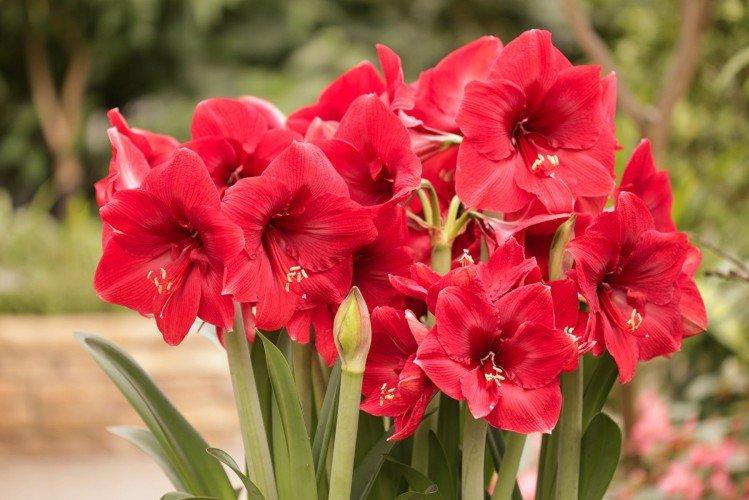
Wintering
After flowering, gradually reduce watering and stop fertilizing. When the ground part dries up, carefully dig up the onion and transplant it into a flowerpot by transferring it with an earthen clod. Leave the flowerpots in at 10-12 degrees, occasionally pouring through the pan. Alternatively, you can store the bulbs in paper bags in a dry place at 3-5 degrees.
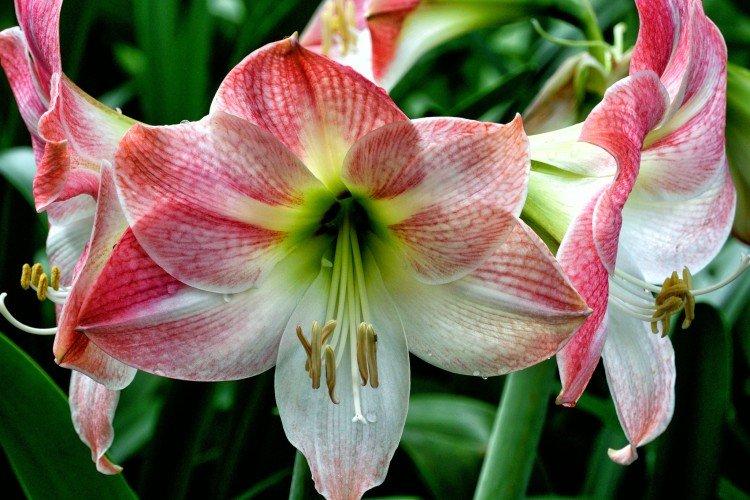
Planting and breeding
Before planting, be sure to sort out all the bulbs, cut off suspicious places and treat the cut with charcoal. Immediately before planting in March, soak them in potassium permanganate. The hole is about 15 cm deep, not counting the generous drainage layer.
The optimal distance between amaryllis in a group planting is 25 cm. At this time, there is no need to water the bulbs. Abundant and regular watering will be needed after the first shoots hatch and grow up to 10 cm. But mulching is necessary so that the soil with the bulbs does not dry out by that time.
Amaryllis is propagated in everyday life by dividing the bulb, which is gradually overgrown with children. It is enough to separate the strongest of them and simply transplant it separately, like the mother bulb. Moreover, in plants that winter in the ground, the children must be separated at least once every 3 years. But seed reproduction is too long and ineffective.
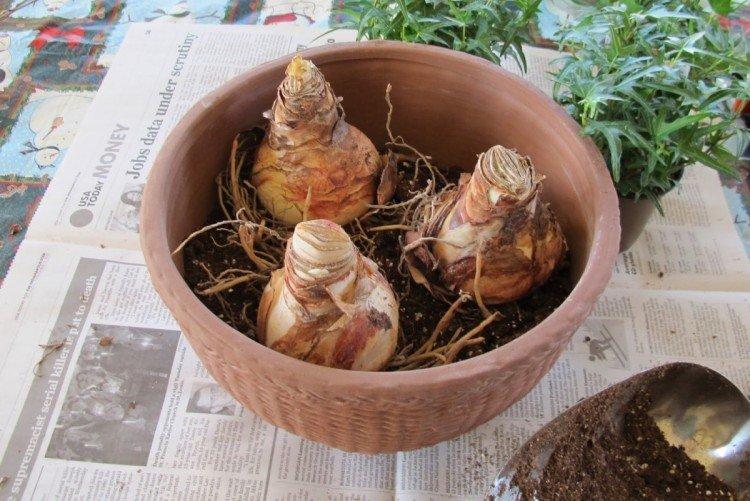
Amaryllis pests and diseases
Red spots or streaks are a so-called red burn. It is difficult to treat but can be prevented with proper storage and planting of the bulbs. In addition, do not allow water to fall on the bulb when watering.
Chaotic spots on the leaves are a symptom of the mosaic virus. It cannot be cured, so it is important to remove the infected plants. But viruses are most often carried by insects, so the best prevention is to protect the planting from them.
Amaryllis bulbs are loved by a false shield, which hides under the skin and sucks out the juices. And also - a daffodil fly, the larvae of which literally eat the bulb from the inside. Carefully select the planting material, soak suspicious bulbs in hot water and use special preparations.
Amaryllis leaves are especially fond of thrips, which suck the juices from the plant. They can be seen by their black shiny dots. Timely insecticide treatment helps here.
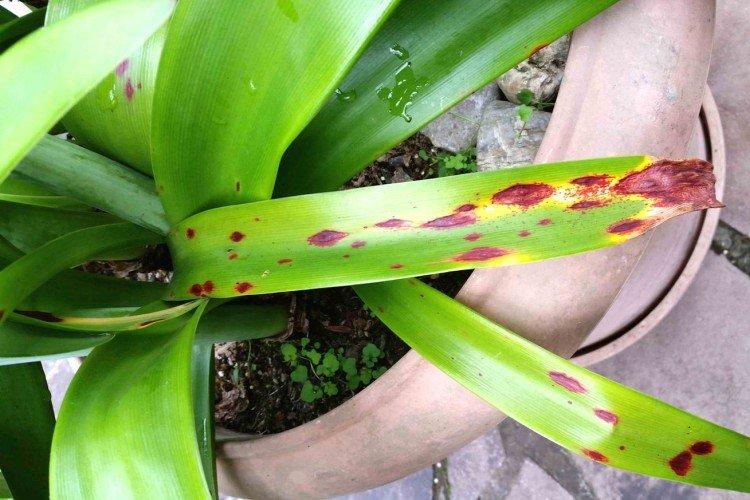
Amaryllis - photo
Blooming amaryllis will easily become the star of the garden and the center of any decorative arrangement. It can be combined with low-growing flowers or decorative deciduous plants.
